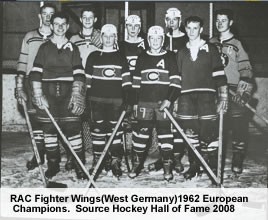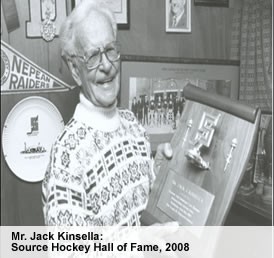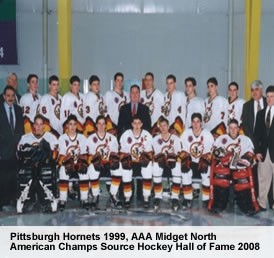International Silver Stick Hockey Promoting Citizenship & International Goodwill
From its simple beginnings in 1956 as a four team tournament based out of Richmond, Ontario, International Silver Stick has grown into one of the largest North American minor hockey tournaments. It hosts over 65,000 players and coaches every year from across North America. International Silver Sticks now hosts 52 tournaments North America wide. From San Jose to Las Vegas, Denver and Dallas to Florida. Across the US East in Columbia and Philadelphia and through out the states of Michigan and Ohio. Ontario is Silver Stick rich with over 30 tournaments Niagara Falls to Sudbury, Pembroke to Toronto, from Sarnia to Brampton and all parts in between. International Silver Stick Tournaments have welcomed teams from across North America including Alaska and Mexico.
We are grateful to the thousands of volunteers in Minor Hockey who have been a part of creating Citizenship and International Goodwill through Silver Stick Hockey.
The Beginning
International Sliver Stick Hockey was the creation of Mr. Jack Kinsella. It came to be while attending a friendly exhibition game in Potsdam, New York between the Bantam Woodroffe Cardinals from Ottawa West and the Bantam Potsdam Golden Knights in November, 1956. After watching his son play for Woodroffe, Jack Kinsella decided a return match should be setup to promote the game and foster “goodwill” between the two countries. There was little ice available in Ottawa so Jack looked to Richmond, Ontario, just west of Ottawa. Richmond had one of the very few indoor rinks at that time.

The tournament philosophy would be aimed at helping the boys develop “Citizenship and International Goodwill through hockey”. Ernie Temple, a coach in the Richmond Minor Hockey Association wanted to test the idea with Jack Kinsella. They organized two games to be played in the Richmond, Ontario arena on February 6, 1958. The game featured the Woodroffe Bantams and the Richmond Peewees playing their counterparts from Potsdam, New York. The games were sold out and the enthusiasm of the fans was high, despite the winning efforts of Potsdam who won both games. This proved that the concept was a successful one and paved the way for the first Silver Stick hockey tournament.
The first tournament was held in February of 1958 and was based on a four game total points system. Bantam and Peewee teams from both Potsdam, New York and South Carleton, Ontario (an all-star team made up of players from the Richmond area) each played in a two game, home and home series. They played using American College rules for all of the games, which seemed more suited for Peewee and Bantam aged boys at the time. The teams from Potsdam defeated those from South Carleton 5 points to 3 thus crowning Potsdam as the first International Silver Stick champions. This first tournament led to a gradual expansion of International Silver Stick Hockey and its philosophy in Canada, the United States, and even into Canadian Forces Bases in Europe.
Jack Kinsella’s only hope was that everyone, who participated, regardless of the outcome, would adopt the philosophy of “Citizenship and International Goodwill.”
The Architect
Jack Kinsella was born in Regina Sask., April 8, 1908 but moved to Ottawa with his parents when he was still a baby. Growing up, he was very involved in sports. He represented Glebe Collegiate in football, boxing, baseball, and hockey and in fact held the Ottawa and district featherweight boxing championship from 1929-1931. After losing his bank job in the 1929 stock market crash, he attended St. Patrick and Carleton Colleges and later secured a clerk’s position at Canada Post. After watching his son’s hockey team play Potsdam, New York in 1957, the idea for a
 tournament that allowed boys of Peewee and Bantam ages to develop “Citizenship and International Goodwill through hockey” unfolded. The Tournament was named after the Ottawa Silver Seven hockey team that won the Stanley Cup from 1903-1905. The term, “Silver Seven”, captured the fact that players were sometimes paid in silver nuggets and that teams were only able to ice seven players (1 goaltender, 2 defensemen, 3 forwards and 1 rover). There were no substitutions.
tournament that allowed boys of Peewee and Bantam ages to develop “Citizenship and International Goodwill through hockey” unfolded. The Tournament was named after the Ottawa Silver Seven hockey team that won the Stanley Cup from 1903-1905. The term, “Silver Seven”, captured the fact that players were sometimes paid in silver nuggets and that teams were only able to ice seven players (1 goaltender, 2 defensemen, 3 forwards and 1 rover). There were no substitutions.
Mr. Kinsella’s efforts, along with those of Ernie Temple, established the tournament home to be Richmond, Ontario from 1958 onward. Before long, a sports writer with the Ottawa Citizen Newspaper, a cousin of Jack Kinsella, also by the name of Jack Kinsella, (referred to as the other “Jack”) became involved and convinced Bob Southam, publisher of the Ottawa Citizen, to commission the design of a trophy.
The trophy, an innovation of Ernie Temple, was a regulation size, kiln dried hockey stick that was wrapped with copper steel tape and dipped in sterling silver. It was manufactured by the McGlashan Silverware Company of Bell’s Corners, Ontario and purchased by the Ottawa Citizen Publishing Co. for $500.
After the tournament’s modest beginnings, Jack Kinsella sent letters out to border towns in both Canada and the U.S. seeking their involvement. One of the letters found its way into the mailbox of Fred Lamlein in Port Huron, Michigan. By 1961, Port Huron, with the assistance of Sarnia, Ontario, became the site of a Silver Stick Tournament in the US’
When the tournament outgrew the Richmond arena, Fred Lamlein, a former major league baseball pitcher, helped relocate the tournament, in 1963, to its new official home in the McMorran Auditorium in Port Huron, Michigan.
On May 18 and 19, 1963, Jack Kinsella convened the first Silver Stick Annual General Meeting in the McMorran Auditorium. This meeting established the organizational structure of the Association, drew up the constitution and set out the rules and regulations of the competition. It also adopted green as the official colour of Silver Stick.
During this same meeting, Jack Kinsella retired as Commissioner of the International Silver Stick Hockey Association to let others set the on-going direction of this rapidly growing organization. Over the next 44 years, Jack Kinsella watched his idea grow into what it is today. On March 14, 2007, just short of the 50th anniversary of the inception of Silver Stick and his 100th year of life, he passed away. His green Silver Stick blazer hangs alongside the Silver Stick in the Hockey Hall of Fame. His early philosophy of the tournament lives on in all who participate.
The Evolution

Since it’s beginning, the tournament has seen many changes. The original tournaments were by invitation only and were held for boys of Peewee and Bantam age. The Peewee and Bantam teams competed as one unit to represent their town. The combination of points obtained during the tournament games between the two teams determined the unit winner of the tournament. Presently, there are 53 regional tournaments for boys and girls throughout North America. A team must win their regional tournament to advance to one of the North American finals or be invited to fill a vacant roster spot.
Port Huron, Michigan has been the home of International Silver Stick Hockey since it outgrew Richmond, Ontario in 1963 and hosts the Peewee and Bantam North American Finals each year. Silver Stick has also adopted North American Finals for Atoms and Midgets in Sarnia, Ontario (1969), Juveniles in Mooretown, Ontario (1972), Novices in St. Clair Shores, Michigan (1986), Minor Finals Newmarket (1987), “C” Finals in Forest, Ontario (1990). Girl’s hockey became part of Silver Stick International in (1997) and the Additional Entry (AE) Finals in (2000). In 2011, the International Silver Stick Hockey Association conducted its inaugural sled/sledge hockey tournament in Fort Wayne, Indiana. Over the years the rules of play have also changed. In the beginning, the tournament adopted the American College rules, which eliminated the red line and restricted body checking between the blue lines.

Until 1963, the Finals Tournaments used the original Silver Stick as part of their opening ceremonies. Now the Finals tournaments use their own replica sticks as the original Siler Stick resides in the Hockey Hall of Fame The International Silver Stick Hockey Association is the only minor hockey association to have its own display in the Hall of Fame.
Originally the Board of Directors was composed of 16 members 8 Canadian and 8 Americans. Currently the Board of Directors is composed of 14 members, 7 representing the United States and 7 representing Canada. The philosophy remains the same and that is to promote “Citizenship and International Goodwill through Silver Stick hockey”.
The Larry McGrath Memorial Scholarship was established in 1970 to reward one Canadian and one American player $500,each, to be used for post secondary education. Today the scholarship is $2000,each,and the number of recipients, up to 3 American and 3 Canadian.
The belief of Jack Kinsella’s original Silver Stick philosophy, to instill “Citizenship and International Goodwill” in all of its competitors is as strong and far reaching today as ever.